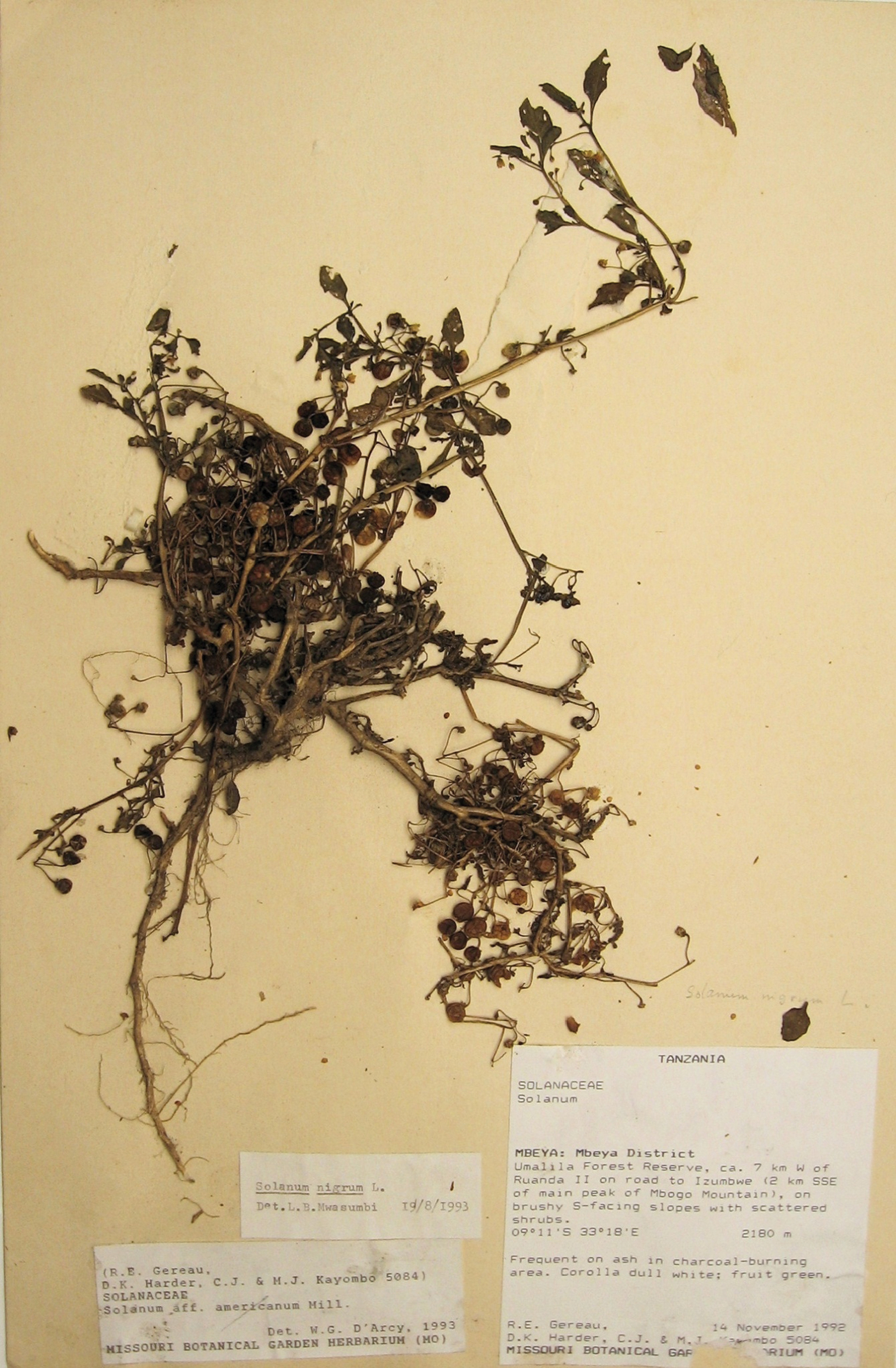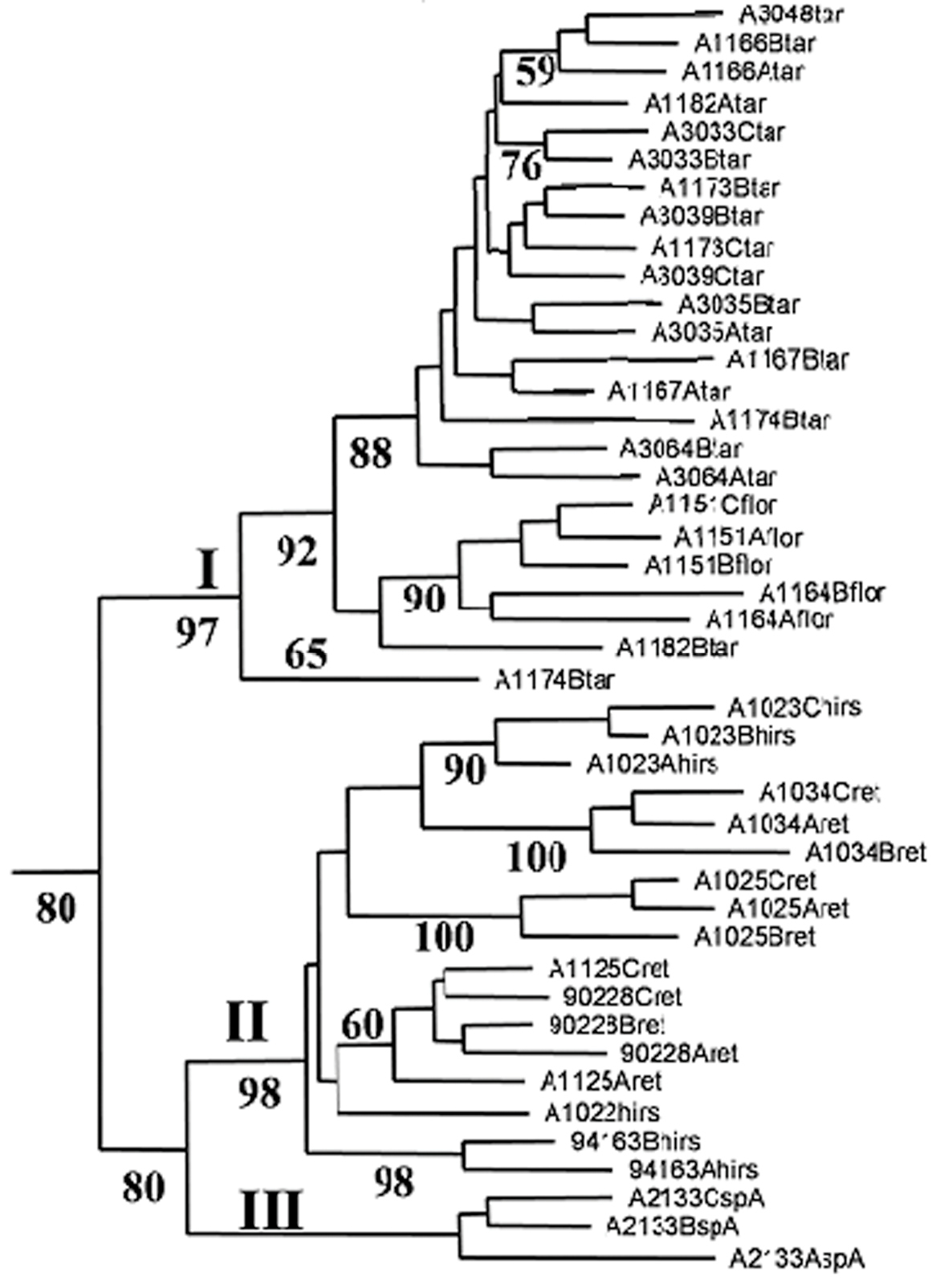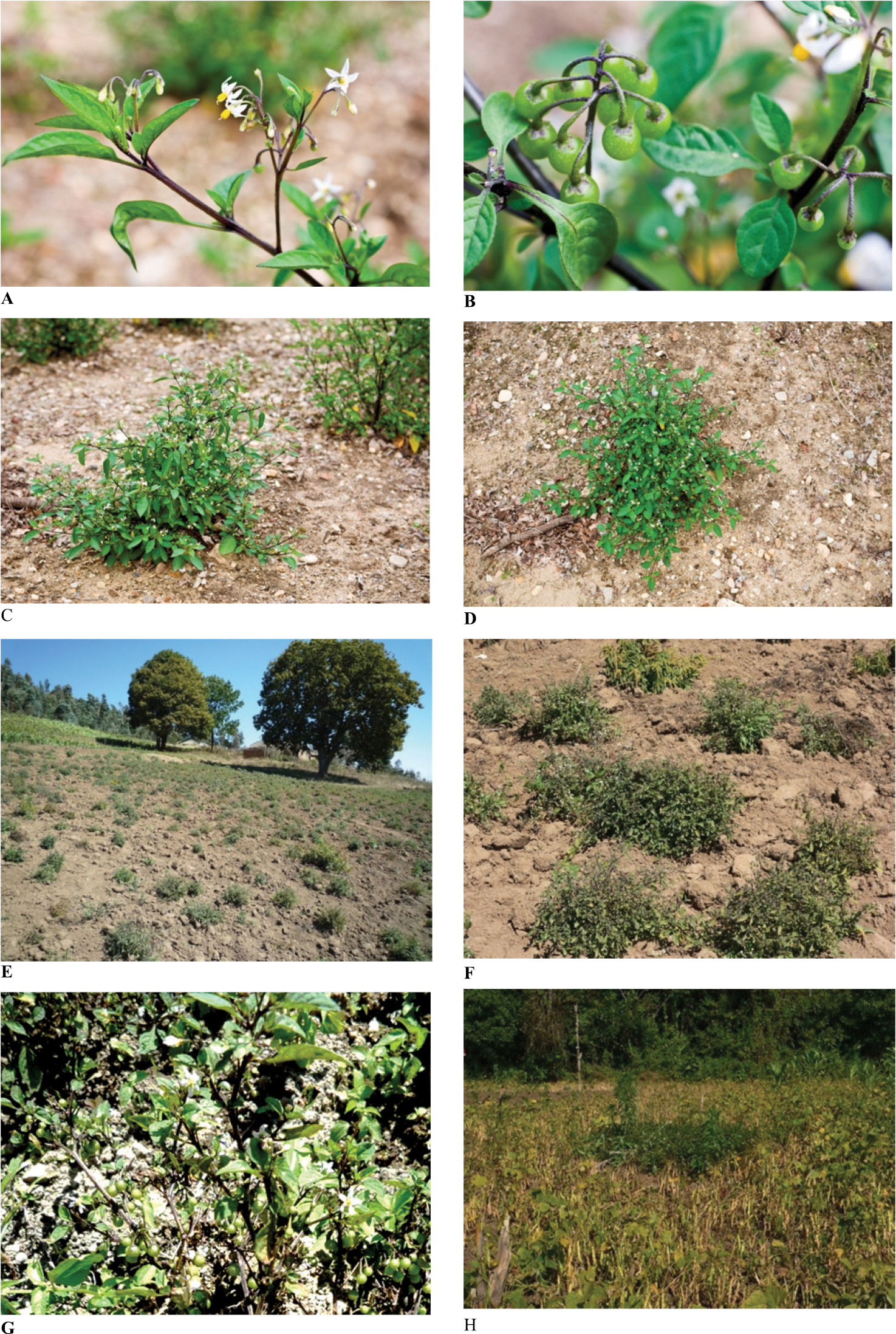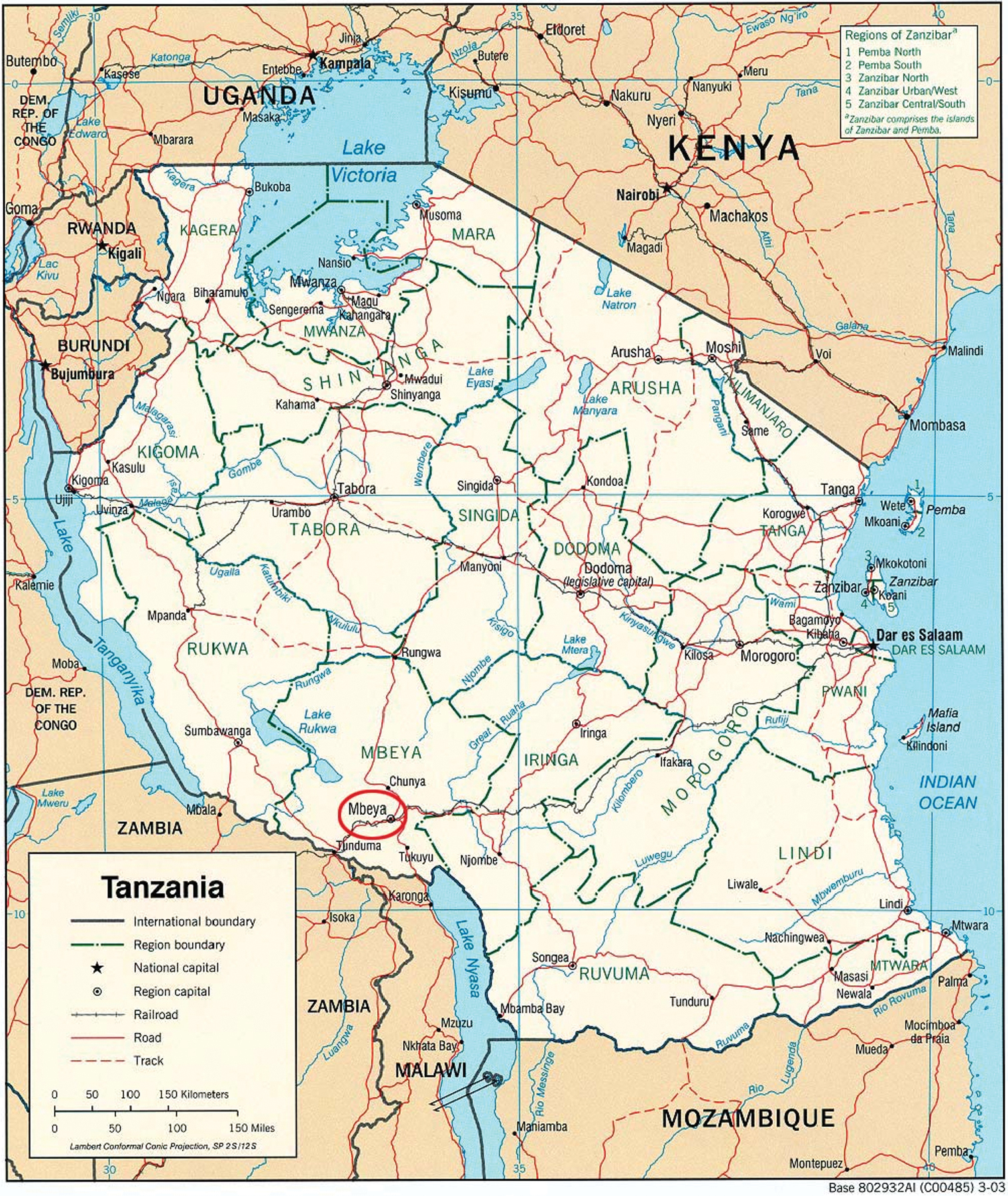






(C) 2012 Mkabwa L. K. Manoko. This is an open access article distributed under the terms of the Creative Commons Attribution License 3.0 (CC-BY), which permits unrestricted use, distribution, and reproduction in any medium, provided the original author and source are credited.
For reference, use of the paginated PDF or printed version of this article is recommended.
Solanum umalilaense Manoko sp. nov. (Solanaceae) is described from the Umalila area, in the southern highlands of Tanzania. Its novelty is supported with both morphological and AFLP data. Phenetic and phylogenetic analyses place Solanum umalilaense as a unique and well-supported taxon among tetraploid species of Solanum sect. Solanum from Africa. It can be distinguished from other African species by its extremely developed branching, each branch producing many multi-flowered inflorescences, flowers with short calyx lobes and its persistent, small, light yellowish brown fruits.
New species, Solanum umalilaense, Solanum sect. Solanum, Tanzania, tetraploid, Umalila
Solanum L. section Solanum is a pantropical group of about 55 species, most of which are found in the New World, and about 10 in Africa; the group forms part of the Morelloid clade of
The most thorough account of the African species of the section Solanum, with good morphological descriptions and keys, was published by
While studying accessions of Solanum section Solanum from Africa at the Radboud University Nijmegen, it became apparent that plants grown from seeds of accession A24750133 collected fromthe Umalila area in the southern highlands of Tanzania were strikingly different from other African accessions. Chromosome counts revealed that they had 48 chromosomes, in common with some other species of the section in Africa (
During a herbarium visit in Dar es Salaam, Tanzania, we found a specimen of the same taxon (R.E. Gereau et al. 5084, DSM) collected on the 14th of November 1992 from Umalila forest reserve. Duplicate specimens were present in NHT, MO and K. Annotation labels on these specimens indicated that they were identified by W.G. D’Arcy as Solanum aff. americanum Mill. and by L.B. Mwasumbi (DSM) as Solanum nigrum L.
We also located an additional specimen collected as a weed in maize field in Uyole (Mbeya) in the DSM herbarium (A.A. Mwambunga A.A.M.6). Fieldwork (July 2010) in Tanzania enabled us to collect a number of accessions of this species and here we formally describe it. Voucher specimens have been deposited at the Experimental Garden and Genebank herbarium of the Radboud University Nijmegen, DSM and WAG.
Taxonomic treatmenturn:lsid:ipni.org:names:77121698-1
http://species-id.net/wiki/Solanum_umalilaense
Figs 1, 3Solanum umalilaense can be distinguished from other African species of Solanum sect. Solanum by its extremely developed branching, each branch producing many multi-flowered inflorescences, flowers with short calyx lobes and producing persistent, small, light yellowish brown fruits.
Tanzania. Mbeya: Mbeya District, Umalila Forest Reserve, ca. 7 km W of Ruanda II on road to Izumbwe, 2 km SSE of Mbogo Mtn. main peak, 09°11'S, 33°18'E, 2180 m, on bushy south-facing slopes with scattered shrubs. 14 Nov 1992. R.E. Gereau, D.K. Harder, C.J. & M.J. Kayombo 5084 (holotype, DSM!; isotypes: K, not seen, MO, not seen, NHT!).
Herb, up to ± 0.5 m, erect, predominantly with many erect or spreading branches from the base; stems dark purple, angular with well marked ridges, teeth on ridges very small, glabrescent to sub-glabrous with sparse, long, appressed, eglandular hairs. Leaf simple, petiolate, ovate to elliptic with wings running to petiole base, margins entire, apex acuminate to acute, base truncate; petiole 0.6–1.3 cm; leaf blade 1.8–2.8 × 0.1–1.4 cm, widest 1–1.7(-2.1) cm from apex. Inflorescences numerous, up to 100 per plant, consisting of simple, rarely forked cymes, 2–9(-11) flowered; peduncle (0.5-)1.1–3.2, erect; pedicels 5–7(-9) mm, pendent. Calyx pentagonal, 3–3.2(-4) mm diam., lobes short (±1 mm), broadly triangular, equal and adherent to mature berries; corolla stellate, 7–11 mm diam. white, margins occasionally tinged with purple, style protruding the anthers, straight or sometimes hooked with eglandular hairs at the base, 3.1–3.5(-4.2) mm; anthers equal, yellow, 1.8–2 mm, filaments 0.5–1 mm; fully hydrated pollen 24.6–26.3 µm diam. Berries globose, changing from green to dull yellowish green, at mature stage light yellowish brown, texture soft, persistent and aromatic, 3–4(-5) mm diam.; sclerotic granules present; seeds obovate, brownish, 9 to 22 per berry. 1.6–2.1 × 1.3–1.8 mm.
Chromosome counts on accession A24750133 using standard cytological methods and flow cytometry on root and leaf cells respectively, showed that Solanum umalilaense had 48 chromosomes (2n=4x=48). The same was found for related African species such as Solanum florulentum, Solanum tarderemotum, Solanum hirsutum, Solanum grossidentatum and Solanum retroflexum, indicating that all these species are tetraploid.
In phenetic and cladistic analyses of an AFLP (
Holotype specimen of Solanum umalilaense Manoko sp. nov. (DSM)
Part of the NJ tree from
Mbeya region, Tanzania, at elevations between 1952 and 2052 m (Fig. 4).
During our collecting trip in the Umalila area (July 7–10, 2010) we found many plants in cultivated fields (Fig. 3E, F) on the slope of mountains, or left in abandoned cultivated plots (Fig. 3H), which also contained maize and beans.
Pictures A, B, C, D taken from plants grown at the Experimental Garden, Radboud University Nijmegen (A24750133). Pictures E, F, G, H taken from plants growing in Mbeya region, Tanzania (E, F: Manoko et al. 2010-2; G, H: Manoko et al. 2010–14).
According to the information on Gereau et al. 5084 the species is frequent on the ash layer in charcoal-burning areas. The Umalila area is located in the Mbeya region, in the South West of Tanzania at the border with Malawi and Zambia (Figure 3). Because of its elevation, the region is also known as the Southern Highlands of Tanzania, with volcanic type of soil, temperatures ranging from 12 to 23°C, and annual rainfall levels from 1500 to 2700 mm. The vegetation is mountainous, with cool temperature grasslands and the region is good for cultivation of coffee, maize, beans and vegetables (
The name Solanum umalilaense refers to the area the species was found. Umalila (Malilaor Umalila) is the highland area of the Malila, a relatively unknown ethnic group in south-west Tanzania (
Based on the information on the type specimen, Solanum umalilaense grows in the Umalila forest reserve. We visited the villages of Maganjo, Isangati, Igala, and different wards and found that the species was cultivated as an important and well known leafy vegetable. It has been cultivated for many generations and farmers collect fruits and keep dried seeds for the next growing season. Since this species is cultivated as a food crop and has become almost domesticated, its preliminary conservation status can be considered to be of Least Concern (LC,
Insungwe, so called by the Malila (
Used as a leafy vegetable. Leaves can be picked from the plant untill the plant starts flowering. Using leaves when the plant is in flower is not attractive because of their bitter taste (
Specimens examined. Tanzania. Mbeya Rural District: Maganjo village (Lwindi ward), 09°02'29"S, 033°23'54"E, July 8, 2010, Manoko et al. 2010–11 (DSM, WAG, and Radboud University Experimental Garden and Genebank herbarium); Isangati village (Iyunga ward), 09°04'12"S, 033°25'25"E, July 8, 2010, Manoko et al. 2010-2 (DSM, WAG, and Radboud University Experimental Garden and Genebank herbarium); Igala village (Holondo ward), 09°03'21"S, 033°26'44"E, July 8, 2010, Manoko et al. 2010–8 (DSM, WAG, Radboud University Experimental Garden and Genebank herbarium); Isangati village (Iyunga Mapinduzi ward), 09°05'03"S, 033°25'53"E, July 9, 2010, Manoko et al. 2010–11 (DSM, WAG, Radboud University Experimental Garden and Genebank herbarium); Isangati village (Iyunga Mapinduzi ward), 09°05'03"S, 033°25'53"E, July 9, 2010, Manoko et al. 2010–12 (DSM, WAG, Radboud University Experimental Garden and Genebank herbarium); field plot near Umalila Forest reserve, 09°11'26"S, 033°20'46"E, July 9, 2010, Manoko et al. 2010–14 (DSM, WAG, Radboud University Experimental Garden and Genebank herbarium); Uyole (Mbeya), 5500 ft, 22 May 1968, A.A. Mwambunga A.A.M.6 (DSM). The Netherlands. AccessionA24750133 from the Umalila area cultivated at Radboud University Experimental Garden and Genebank, Anon. s.n. (Radboud University Experimental Garden and Genebank herbarium).
Solanum umalilaense differs from all other species that have been described or studied so far from Africa (
Edmonds’s opinion (JM Edmonds pers. comm.) that it might be a hybrid between two tetraploid species was investigated. We found that for the three generations we grew the plants (between 2002–2004) none of the characters showed segregation.
All together, the distinct morphology, chromosome number different from Solanum americanum and Solanum nigrum, and a clear separate clustering from other species of the section, make this African species unique in section Solanum in Africa.
Map courtesy of the University of Texas Libraries, The University of Texas at Austin.
We thank the support of Nuffic, through the MHO-ENVIRONS program, COSTECH for permission to perform field work in the Mbeya region, the Faculty of Science of the Radboud University Nijmegen and the National Herbarium of the Netherlands for funding this study. We also wish to extend our thanks to the staff at the Radboud University Experimental Garden and Genebank for looking after the plants, and to Dr. E. Pierson for her assistance during seed and pollen measurements. We thank the reviewers of this paper for critical comments, specially reviewer 2 for adding new information regarding section Solanum.



